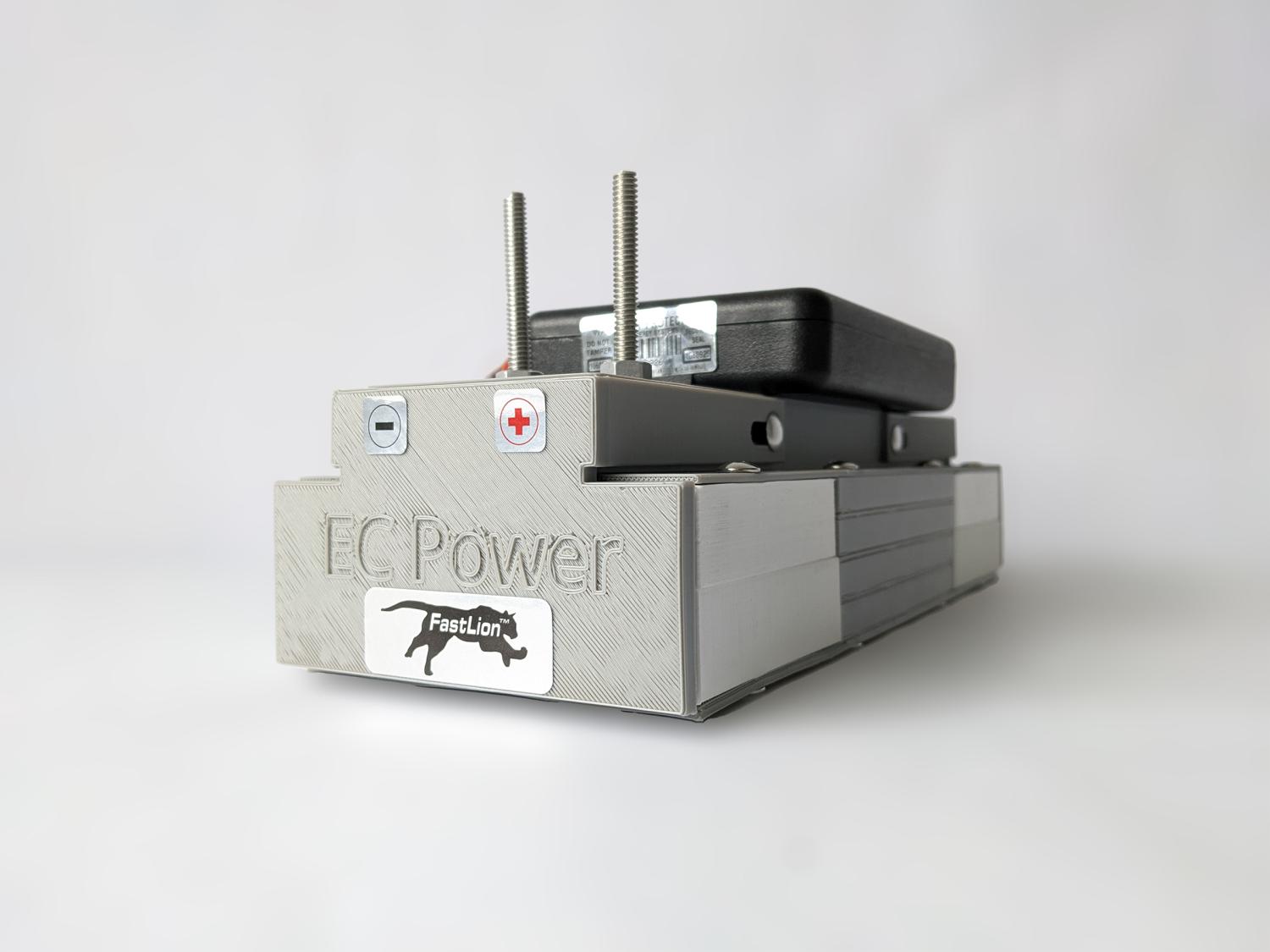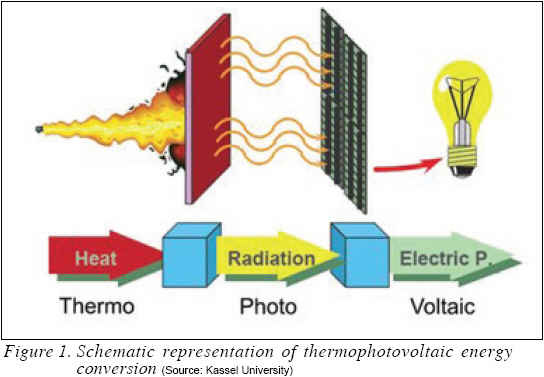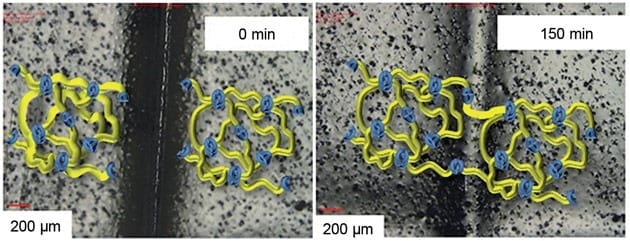
University of California, Irvine researchers have invented nanowire-based battery material that can be recharged hundreds of thousands of times, moving us closer to a battery that would never require replacement. The breakthrough work could lead to commercial batteries with greatly lengthened lifespans for computers, smartphones, appliances, cars and spacecraft.
Scientists have long sought to use nanowires in batteries. Thousands of times thinner than a human hair, they’re highly conductive and feature a large surface area for the storage and transfer of electrons. However, these filaments are extremely fragile and don’t hold up well to repeated discharging and recharging, or cycling. In a typical lithium-ion battery, they expand and grow brittle, which leads to cracking.
UCI researchers have solved this problem by coating a gold nanowire in a manganese dioxide shell and encasing the assembly in an electrolyte made of a Plexiglas-like gel. The combination is reliable and resistant to failure.
The study leader, UCI doctoral candidate Mya Le Thai, cycled the testing electrode up to 200,000 times over three months without detecting any loss of capacity or power and without fracturing any nanowires. The findings were published today in the American Chemical Society’s Energy Letters.
Hard work combined with serendipity paid off in this case, according to senior author Reginald Penner.
“Mya was playing around, and she coated this whole thing with a very thin gel layer and started to cycle it,” said Penner, chair of UCI’s chemistry department. “She discovered that just by using this gel, she could cycle it hundreds of thousands of times without losing any capacity.”
“That was crazy,” he added, “because these things typically die in dramatic fashion after 5,000 or 6,000 or 7,000 cycles at most.”
“The coated electrode holds its shape much better, making it a more reliable option,” Thai said. “This research proves that a nanowire-based battery electrode can have a long lifetime and that we can make these kinds of batteries a reality.”
Learn more: UCI chemists create battery technology with off-the-charts charging capacity
The Latest on: Nanowires in batteries
[google_news title=”” keyword=”Nanowires in batteries” num_posts=”10″ blurb_length=”0″ show_thumb=”left”]
via Google News
The Latest on: Nanowires in batteries
- IDTechEx Explores Printed Electronics in Electrified and Autonomous Mobilityon May 10, 2024 at 4:32 am
These properties can be easily tuned using the wide variety of material options available for TCFs, including carbon nanotubes and silver nanowires. IDTechEx identifies ... Printed sensors promise ...
- Batteries Newson May 9, 2024 at 4:59 pm
Apr. 9, 2024 — An improved charging protocol might help lithium-ion batteries to last much longer. Charging with a high-frequency pulsed current reduces aging effects, an international team ...
- Nanowires articles from across Nature Portfolioon May 9, 2024 at 4:59 pm
Nanowires are structures with a width and depth ... and holds promise for strain-resilient, wireless, battery-free bioelectronics.
- Does mining for batteries erase the climate benefits of EVs? No, and here's whyon May 9, 2024 at 11:34 am
NPR listeners wrote to ask whether the environmental harm from building EVs "cancels out" the cars' climate benefits. Experts say the answer is clear.
- PYRGF PyroGenesis Canada Inc.on May 8, 2024 at 5:31 am
which is designed to transform silicon into spherical silicon nano powders and nanowires for use in lithium-ion batteries. It provides plasma torches and plasma torch systems used toreplace fossil ...
- Bacteria 'nanowires' could help develop green electronicson April 28, 2024 at 5:00 pm
In a study published recently in the journal Small, researchers revealed that protein nanowires—which were modified by adding a single compound—can conduct electricity over short distances and ...
- Why Batteries Come in So Many Sizes and Shapeson April 9, 2024 at 5:00 pm
If you’ve looked in your utility drawer lately, you may have noticed the various shapes, sizes and types of batteries that power your electronic devices. First, there are the round, non ...
- Nanowires Explained: Properties, Synthesis, and Revolutionary Applicationson March 6, 2024 at 6:59 am
Nanowires are critical in advancing the capabilities of electronic devices, renewable energy solutions, and medical diagnostics. Their role in developing high-efficiency solar cells, batteries, LEDs, ...
- CVV CVD Equipment Corporationon March 6, 2024 at 6:39 am
and nanomaterials used in batteries, as well as semiconductors, LEDs, carbon nanotubes, nanowires, solar cells, and other industrial and research applications. The Stainless Design Concepts ...
- Guide to Solar Batteries: Are They Worth It? (May 2024)on March 29, 2023 at 2:53 pm
Solar batteries remove this limitation, providing an energy storage system you can count on during cloudy days and nighttime. Solar batteries are generally worth it for homeowners living in areas ...
via Bing News











